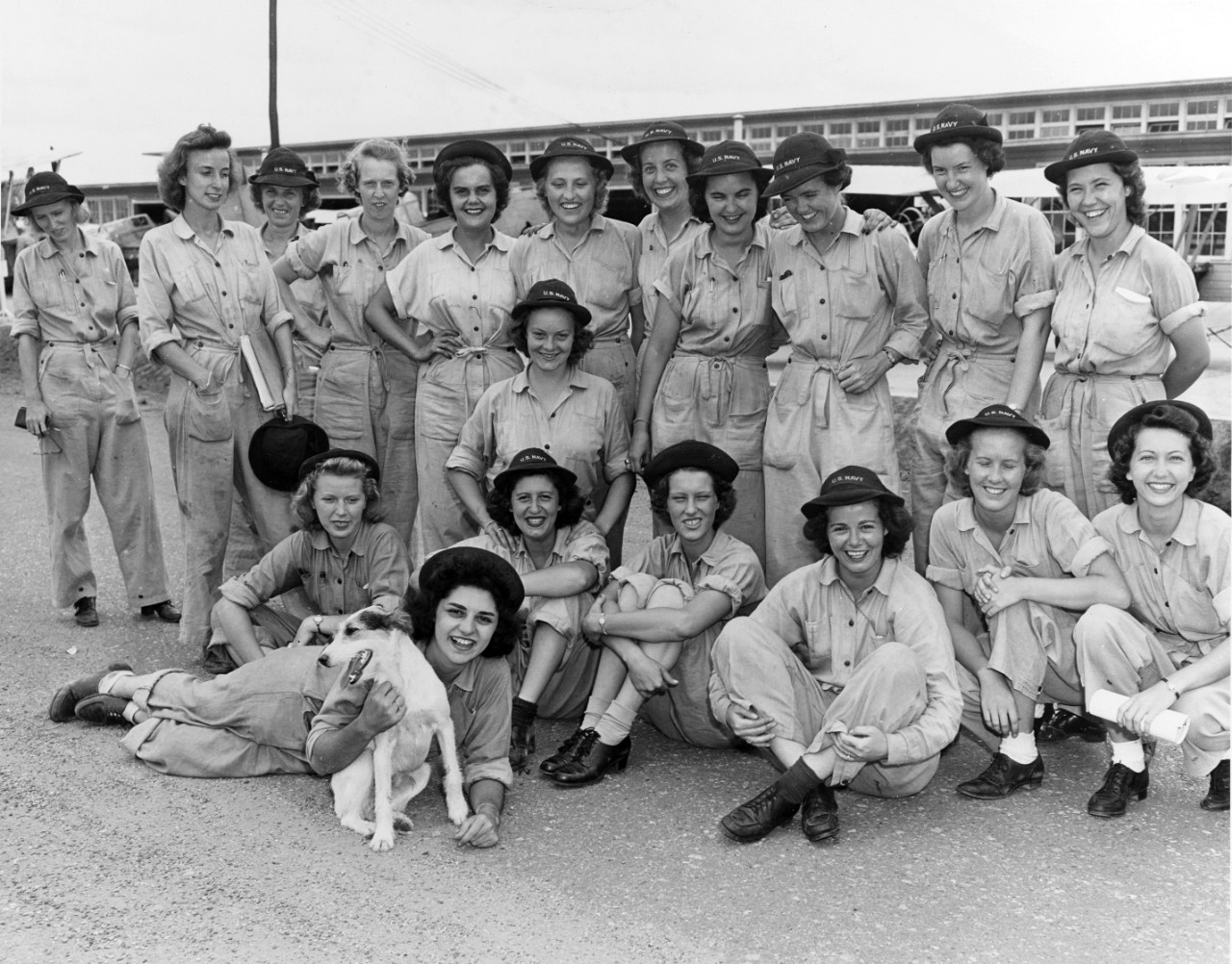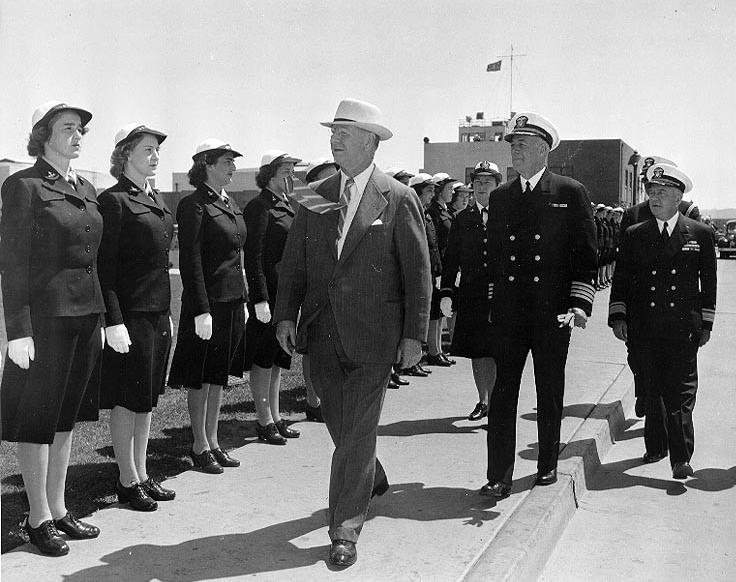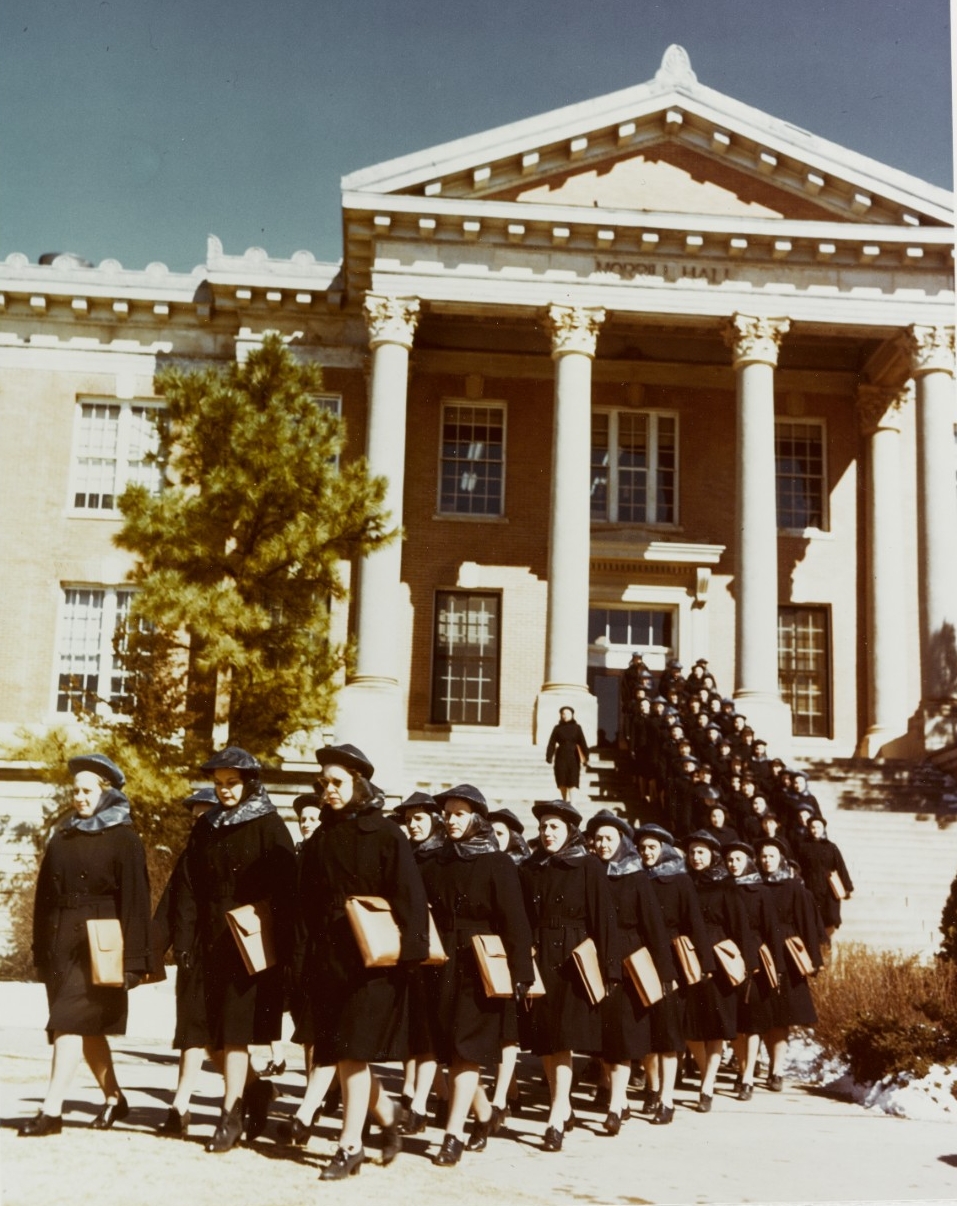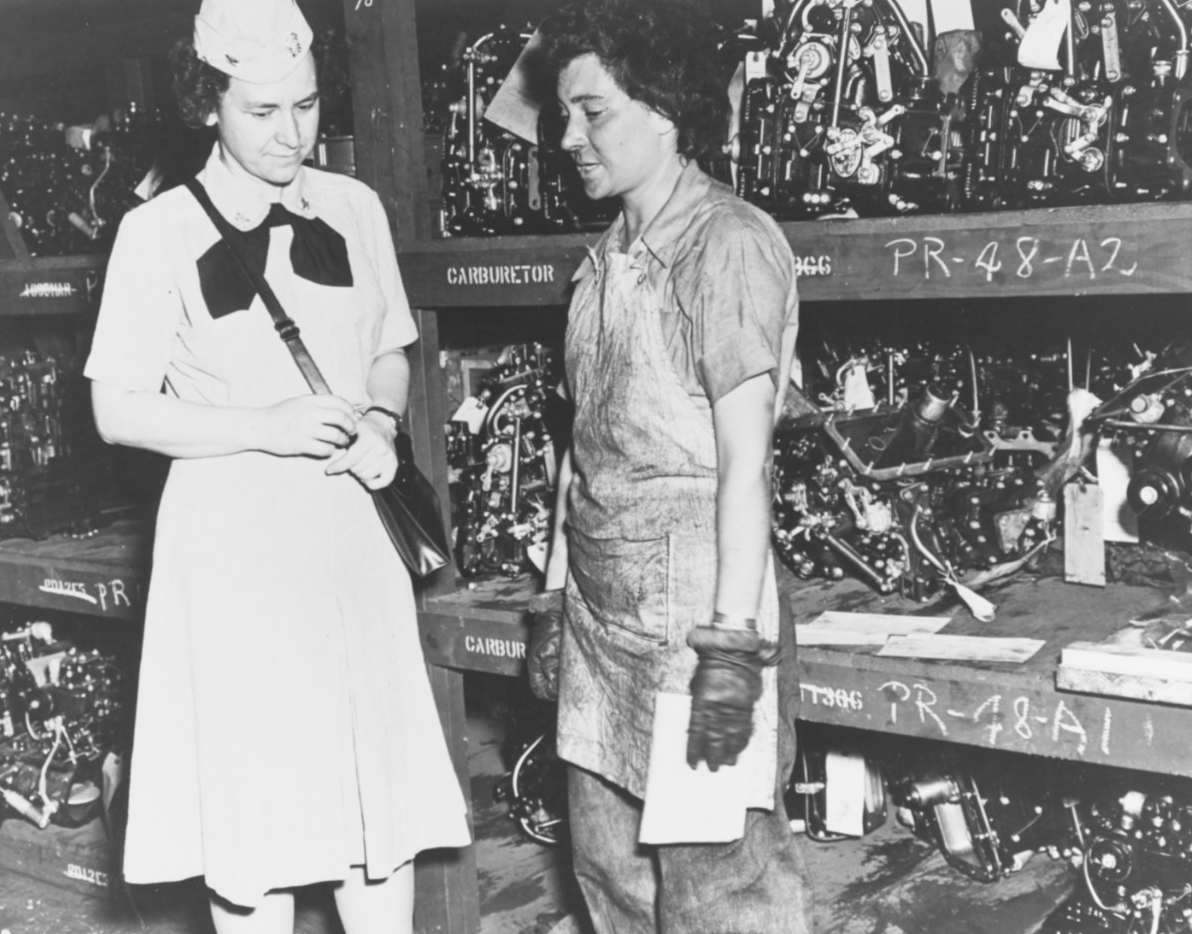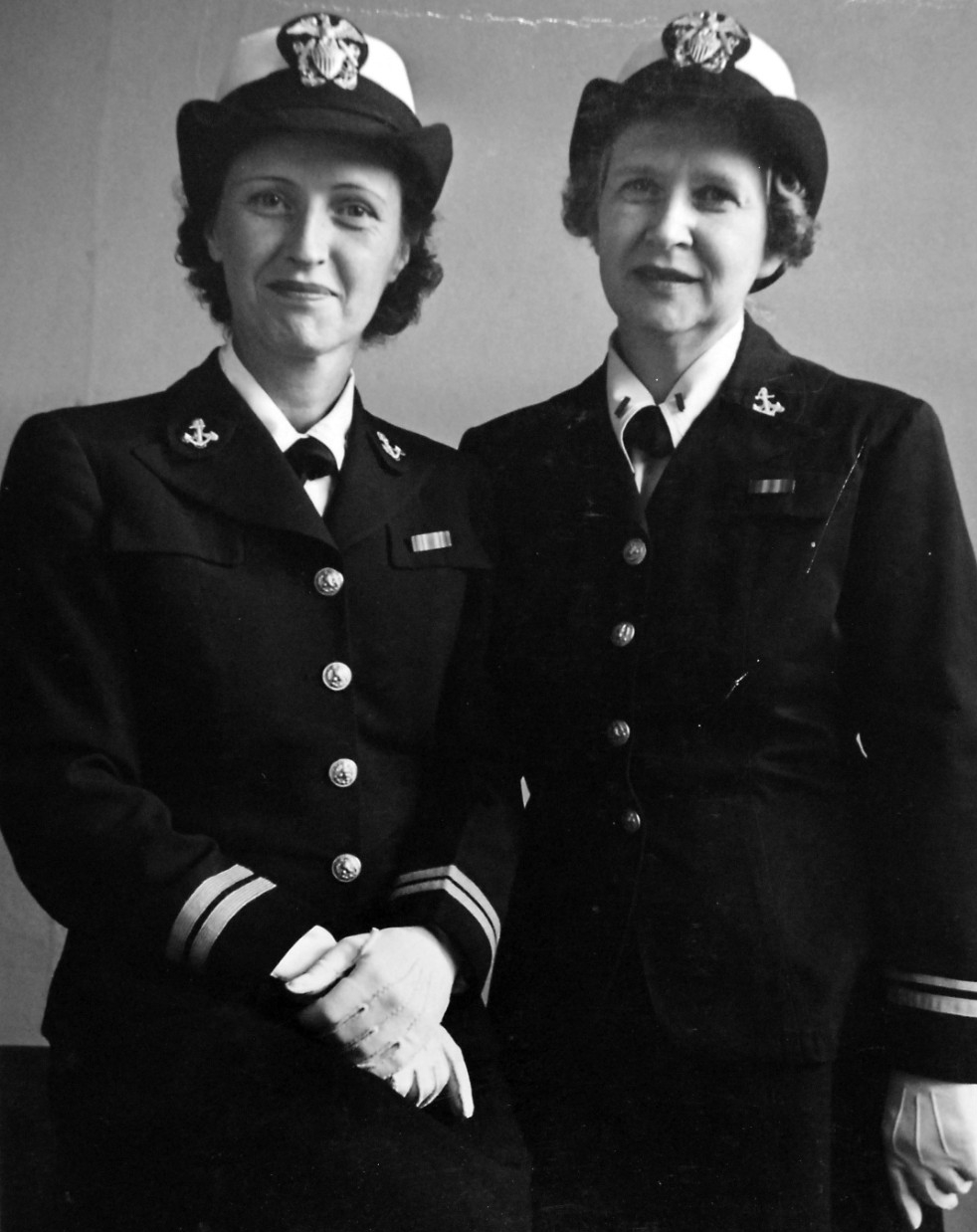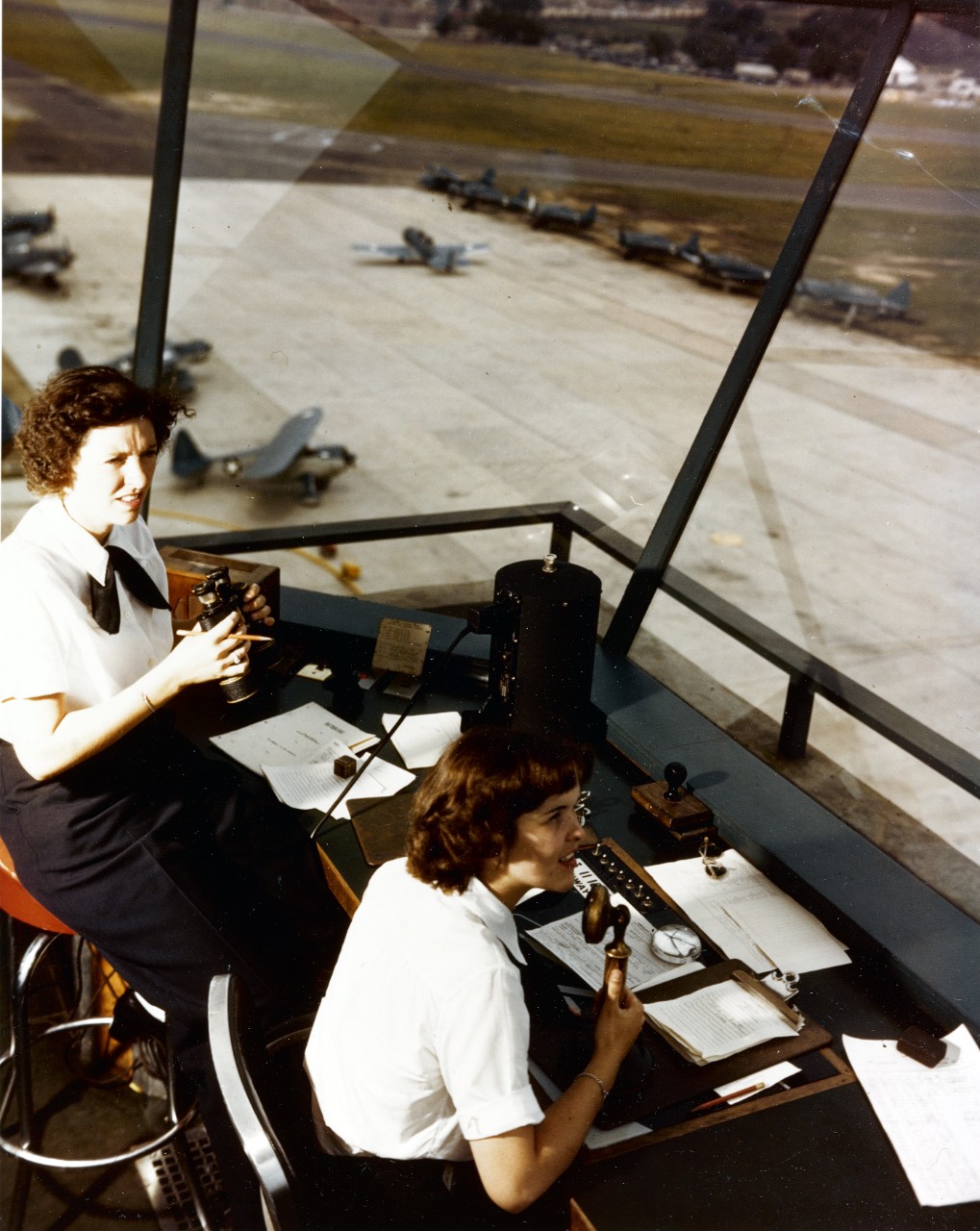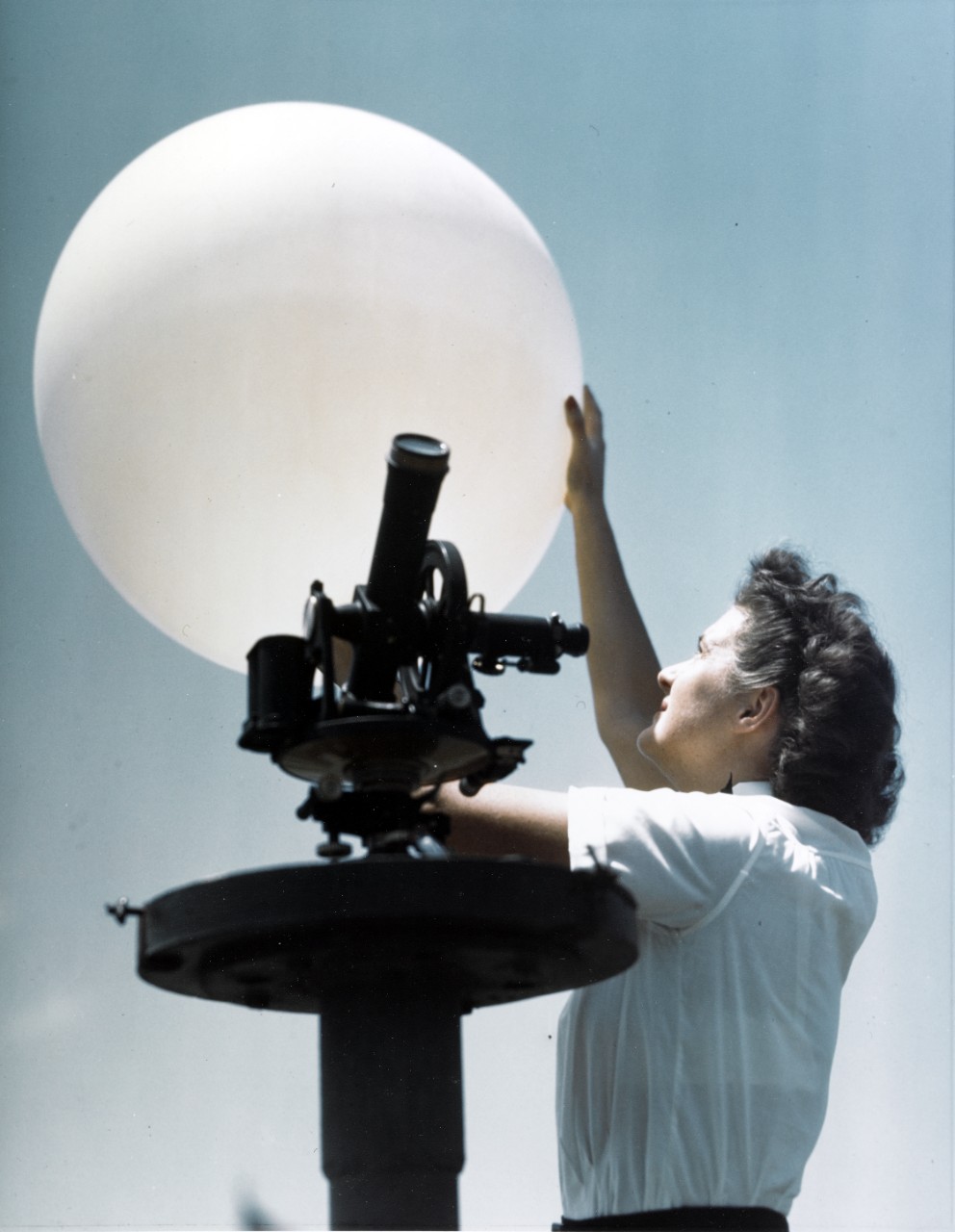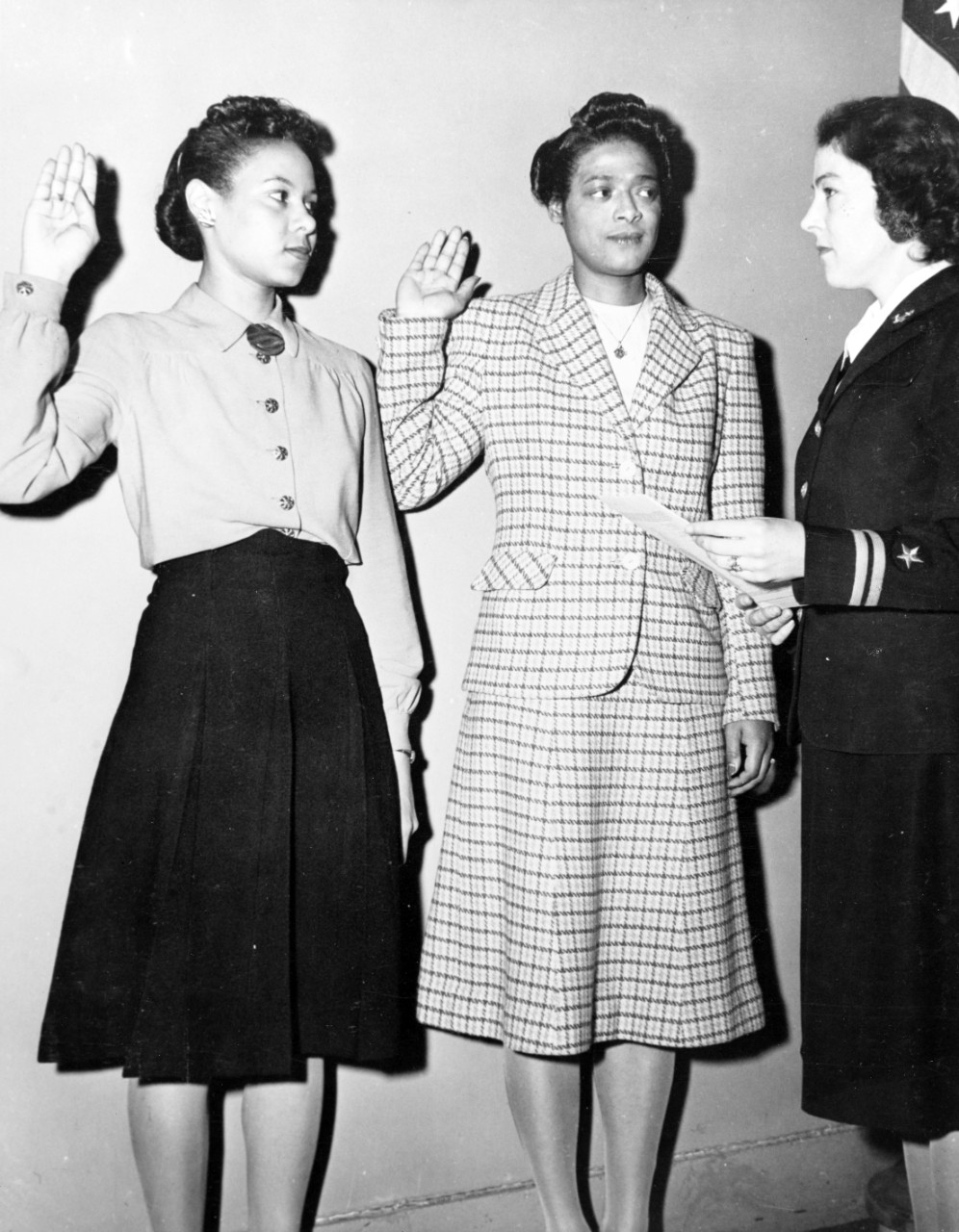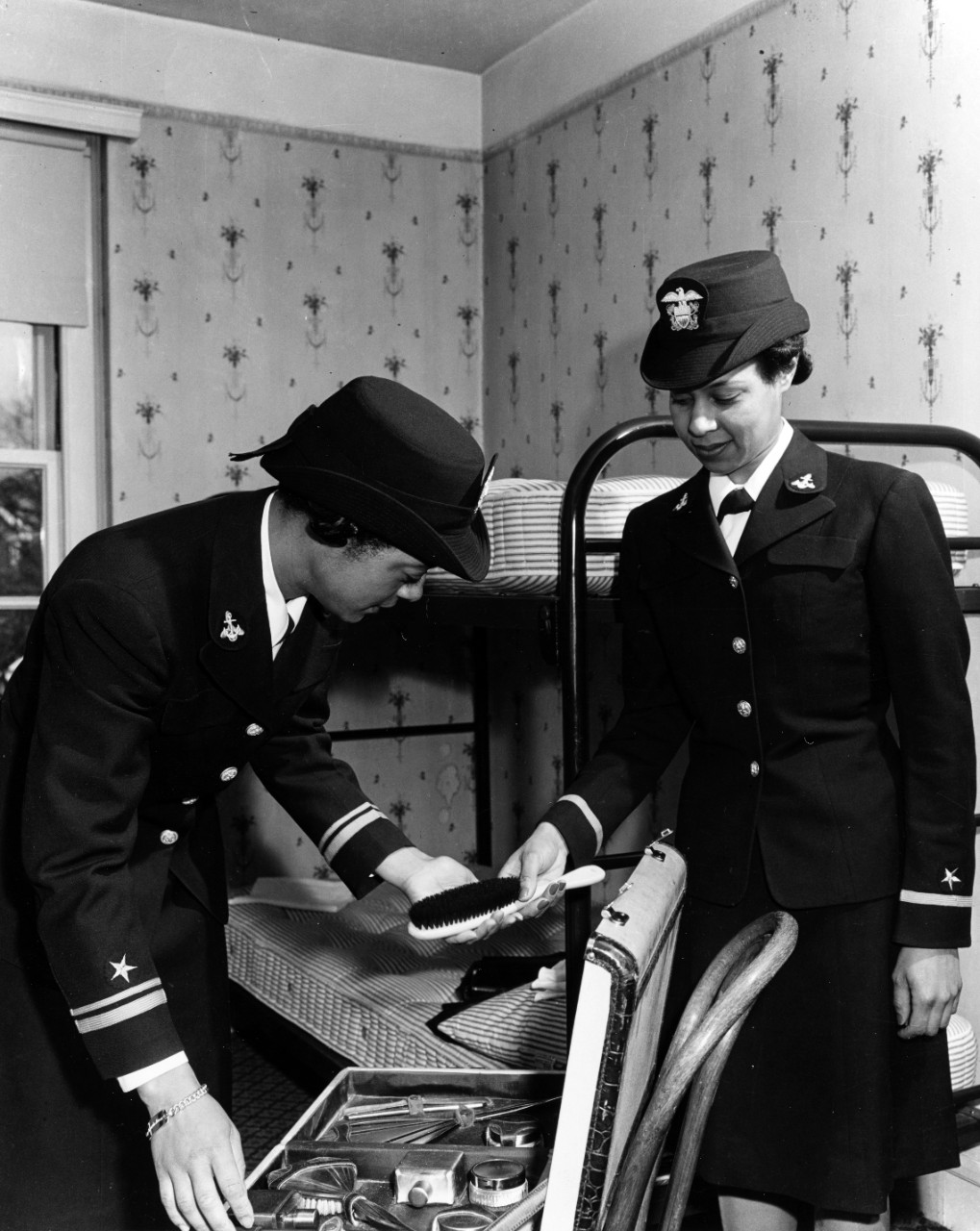The Women's Reserve (WAVES)
In 1941, after the Navy conducted a wartime estimate of the amount of men it would need to staff its ships and bases, it was clear the Navy did not have enough personnel. In order for the Navy to meet its wartime mission at sea, it would need to relieve men from their desk-bound jobs on shore duty.
The Navy sought to fill those clerical positions with women, just as they did in World War I. However, Congress and U.S. Navy leaders disagreed on whether the women should be in the Naval Reserve or part of an auxiliary. Secretary of the Navy Frank Knox proposed a women’s branch of the Naval Reserve, whereas Congress wanted a naval women’s auxiliary like the Women’s Army Auxiliary Corps (WAAC). The Navy sought advice from a women’s advisory council of female educators on how to organize and administer a women’s branch. This council, led by Barnard College Dean Virginia C. Gildersleeve, helped to persuade the President to follow Secretary Knox’s suggestion. On 30 July 1942, the President signed Public Law 689 establishing the Women’s Reserve as a branch of the Naval Reserve.
Secretary of the Navy Frank Knox reviews enlisted WAVES during a visit to the Naval Training Station, San Diego, California, in June 1943. The training station's commanding officer, Captain Henry C. Gearing, and Rear Admiral David W. Bagley, the commandant of the Eleventh Naval District, are at right (NHHC, NH 69984).
Members of the Women’s Reserve became known as Women Accepted for Volunteer Emergency Service (WAVES). The first woman appointed as a lieutenant in the reserve, Elizabeth Reynard, created the WAVES acronym. Reynard wanted to accentuate the fact that WAVES were volunteers and temporary (they were authorized to stay in the Navy for the duration of the war, plus six months).
Unlike the Yeomen (F) of World War I, WAVES entered the Naval Reserve as officers as well as enlisted. However, the officers had no command authority except within the Women’s Reserve. Officers received training at the Naval Reserve Midshipmen’s School, located on the Smith College campus at Northampton, Massachusetts. Enlisted personnel received their recruit and specialized training on college campuses as well.
Lieutenant Commander Mildred McAfee was the first female line officer in the Naval Reserve as well as the director of the Women’s Reserve. She served as the president of Wellesley College prior to her commissioning.
WAVES filled billets at 900 locations on shore. Public law 689 still prohibited them from serving on ships or overseas, though that law was later changed. While 38 ratings were open to women, the majority of WAVES worked in clerical, health care, or storekeeper billets. Approximately 14,000 served as yeomen and 13,000 WAVES served as hospital corpsmen. Women also served as codebreakers for the Office of Naval Operations’s highly secretive Communication Division in Washington, DC, and managed the fleet’s post offices.
Captain Mildred H. McAfee, director of the WAVES, listens as Storekeeper 2nd Class Dorothy Oates explains her duties in handling salvage materials at Naval Air Station Pearl Harbor, Hawaii, on 4 July 1945. Captain McAfee was on an inspection tour. Storekeepers were responsible for distributing supplies to the fleet (NARA, 80-G-334303).
The Bureau of Aeronautics was the mostly highly receptive to WAVES, and employed officers in the traditionally-male fields of engineering, gunnery, radio and radar, aircraft navigation and air traffic control. This was, in part, due to Lieutenant Joy Bright Hancock’s influence. Hancock, a former WWI Yeoman (F), had worked at the Bureau of Aeronautics as a civilian prior to World War II, and served as a Women’s Reserve representative for the bureau.
Lieutenant Joy Bright Hancock, USNR, and Lieutenant (j.g.) Eunice Whyte, USNR, of the Bureau of Aeronautics, Navy Department, Washington, DC, pose for a photo in September 1943. They were the only WAVES entitled to wear the Victory Medal of World War I. They had both served as Yeomen (F)s (NARA, 80-G-150865).
Twenty-three thousand WAVES served in the aviation field during World War II. Enlisted WAVES served on naval air stations as aviation machinist mates, parachute riggers, photographers, aviation metalsmiths, aerographer’s mates, gunnery instructors, radiomen, control tower operators, and pigeon trainers. They also served as Link trainer instructors, teaching pilots aerial navigation in small cockpit simulators. Eighty members of the WAVES served as air navigation officers on Naval Air Transport Service flights in the United States, Aleutian Islands, and Hawaii after Congress passed legislation allowing WAVES to volunteer for service in Hawaii and Alaska in September 1944.
The Bureau of Ordnance also utilized WAVES, but selected those with mathematical and technical backgrounds. The bureau sent mathematician Lieutenant (j.g.) Grace Hopper to Harvard University to program the Mark 1 computer, which the Navy used during the war to carry out computations.
The Bureau of Medicine and Surgery was also highly receptive to employing members of the Women’s Reserve during World War II. The Medical Corps saw its first female physicians enter the Navy through the Women’s Reserve.
The Navy Judge Advocate General’s (JAG) Corps utilized WAVES as well—filling its empty billets with women who had been civilian attorneys prior to becoming reservists.
On 19 October 1944, less than a year before the war’s end, the Navy began accepting Black women into the Women’s Reserves. Lieutenant (j.g.) Harriet Ida Pickens and Ensign Frances Wills were the first two Black officers to be commissioned into the Women’s Reserve.
Lieutenant (Junior Grade) Harriet Ida Pickens (left) and Ensign Frances Wills pack following graduation from the Naval Reserve Midshipmen's School (WR) at Northampton, Massachusetts, circa December 1944. They were the Navy's first African-American WAVES officers and graduated with the Northampton school's final class (NARA, 80-G-297443).
More than 100,000 women served in the WAVES during World War II. Most were discharged in 1946. In 1948, Congress passed the Women’s Armed Services Integration Act, which gave women a permanent place in the regular Navy and the Naval Reserve. Although the “Women’s Reserve” ceased to exist, the acronym WAVES continued to be used in the subsequent 25 years.
Further Reading
Godson, Susan H. Serving Proudly: A History of Women in the U.S. Navy. Annapolis: Naval Institute Press, 2001.
United States Naval Institute. The U.S. Naval Institute on Women in the Navy: The History. Annapolis: Naval Institute Press, 2015.
Notable WAVES
Captain Joy Bright Hancock, served in both World Wars
Captain Mildred McAfee, first WAVES officer and director of Women’s Reserve
Grace Murray Hopper, pioneer in the field of computer science
Commander Elaine Toms, WAVES and Naval Reserve
Commander Bernice R. Walters Nordstrom, Medical Corps of the U.S. Navy
Captain Joan R. Hankey, trailblazing WAVES officer
Artifacts
Naval Training Center Bainbridge Pennant
Oral Histories
WAVES - Stoddard Oral History Collection, Thirteen transcripts of oral history interviews with former WAVES
Women in the Navy - Susan Godson Collection, Audio and transcripts of oral history interviews with former WAVES and Navy Nurse Corps members
World War II Veterans, Includes oral interview of two WAVES veterans
Additional Resources
Establishment of the Women’s Reserve
The WAVES’ 75th Birthday by NHHC Historian Regina Akers, Ph.D.
The Integration of the WAVES and the Navy’s First Female African-American Officers by NHHC’s Adam Bisno, Ph.D.
First Female Physicians (navy.mil)
First Anniversary of the WAVES
A Historical Overview of the Yeoman (F), by NHHC Historian Regina T. Akers, Ph.D.
How to Serve Your Country in the WAVES, a World War II information booklet on joining the WAVES
Minorities and Women in the Navy, bibliography
WAVE Quarters “D”, a living quarters booklet for new WAVES during World War II (Lieutenant Commander Katherine Porter Allen, W, USNR, Officer-in-Charge)
WAVE Quarters “D”, a living quarters booklet for new WAVES during World War II (Lieutenant Commander W-V(S), USNR, Officer in Charge)
Uniform Regulations, Women’s Reserve, United States Naval Reserve, 1943
Collections and Museum Exhibits
WAVES in World War II (photography collection)
Women in Uniform (art)
Lieutenant Commander Elizabeth S. Denny Papers (1944–1973)
From Typewriters to Strike Fighters: Women in Naval Aviation (National Naval Aviation Museum)
Digital Resources
Women in Naval History Infographic

